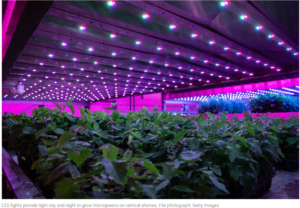
A record-breaking number of collaborations, expansion announcements, record-breaking fundraising rounds, and government-related investments have all contributed to the exponential growth of vertical farming in the Middle East over the past several months.
Given the challenging natural factors (little arable land, severe weather, and difficult water availability), the majority of GCC nations import more than 90% of the food they use domestically. For several of these nations, which saw significant interruptions in their food supply, bare shelves, and increased prices, the epidemic and the accompanying supply chain disruptions it produced have highlighted the need for food security and independence.
Since then, regional governments have established new food security policies to increase their independence and reduce their dependency on other nations.
The Region’s Leader: The United Arab Emirates
One of the countries that helped the vertical farming industry flourish in the area is the United Arab Emirates, which attracted foreign investment and started large-scale projects. A variety of lettuce, spinach, arugula, and mixed greens will be grown at one of the world’s largest vertical farms just built by Crop One and Emirates Flight Catering. These greens will be provided by Emirates as well as to the locals of the city. In two of the city’s hotels, smaller-scale facilities for other vertical farms have been opened (Raddisson Blu Deira Creek and Mariott Hotel).
A 90,000-square-foot indoor vertical farm at Aerofarm’s AgX research facility, which will be the largest of its type in the world, is among the facilities that will soon be operational. The farm will focus on cutting-edge research and development and the commercialization of pertinent local crops using AeroFarms’ expertise and unique indoor vertical farming technology, which uses up to 95% less water and no pesticides than conventional field farming. There are expected to be more than 60 high-skilled positions at this new R&D facility, including positions for engineers, data scientists, and horticulturists.
To read the rest, click here.
Image provided by Bustanica


